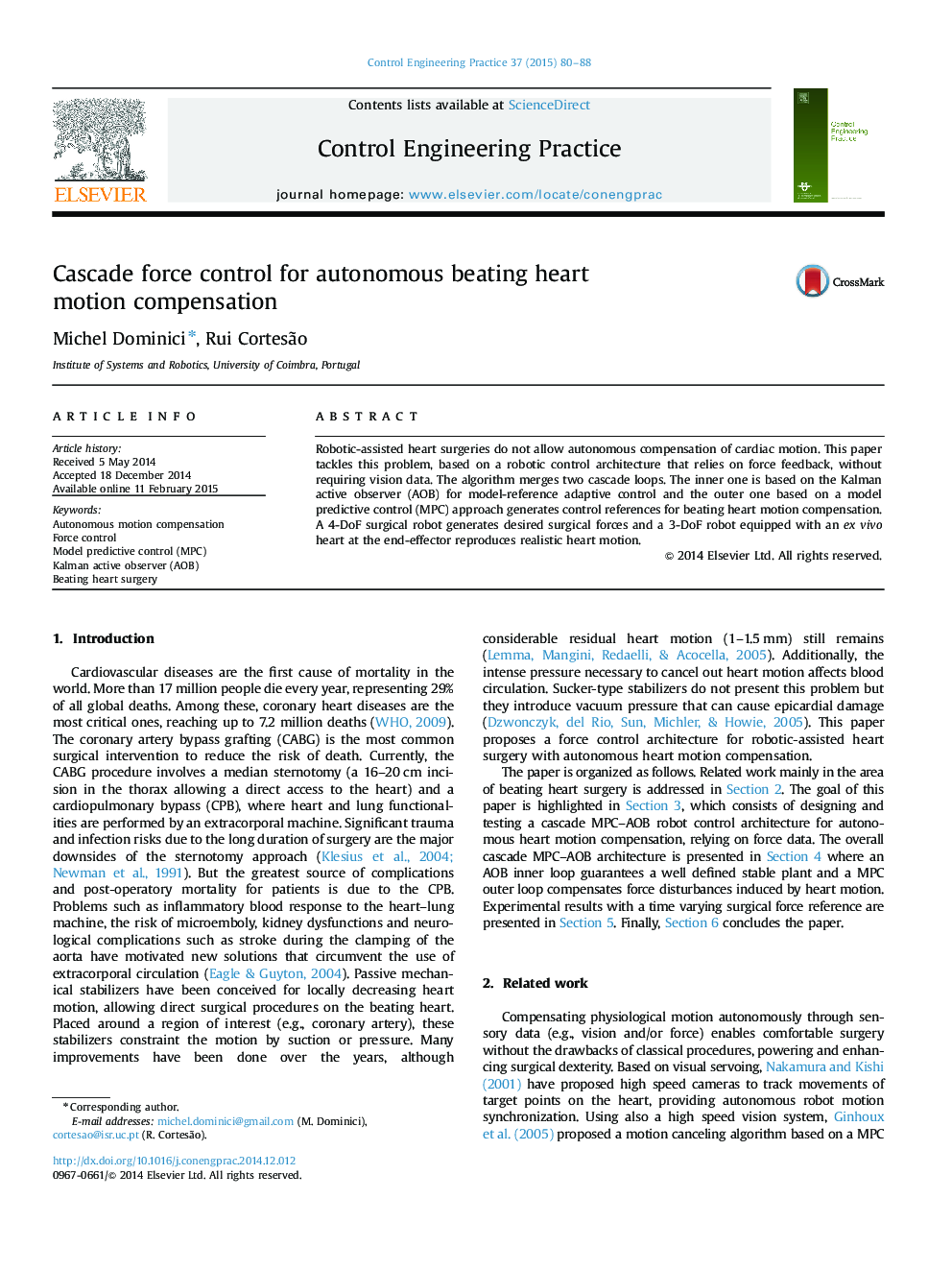| Article ID | Journal | Published Year | Pages | File Type |
|---|---|---|---|---|
| 699485 | Control Engineering Practice | 2015 | 9 Pages |
•MPC–AOB control architecture to track surgical forces while compensating heart motion.•No a priori information about heart motion disturbances is required.•Control actions rely on force sensing.•3-Dimensional ex vivo experimental assessment.•High quality heart motion compensation, with peak-to-peak errors below 0.4 N (0.5 mm).
Robotic-assisted heart surgeries do not allow autonomous compensation of cardiac motion. This paper tackles this problem, based on a robotic control architecture that relies on force feedback, without requiring vision data. The algorithm merges two cascade loops. The inner one is based on the Kalman active observer (AOB) for model-reference adaptive control and the outer one based on a model predictive control (MPC) approach generates control references for beating heart motion compensation. A 4-DoF surgical robot generates desired surgical forces and a 3-DoF robot equipped with an ex vivo heart at the end-effector reproduces realistic heart motion.
Graphical abstractFigure optionsDownload full-size imageDownload as PowerPoint slide
